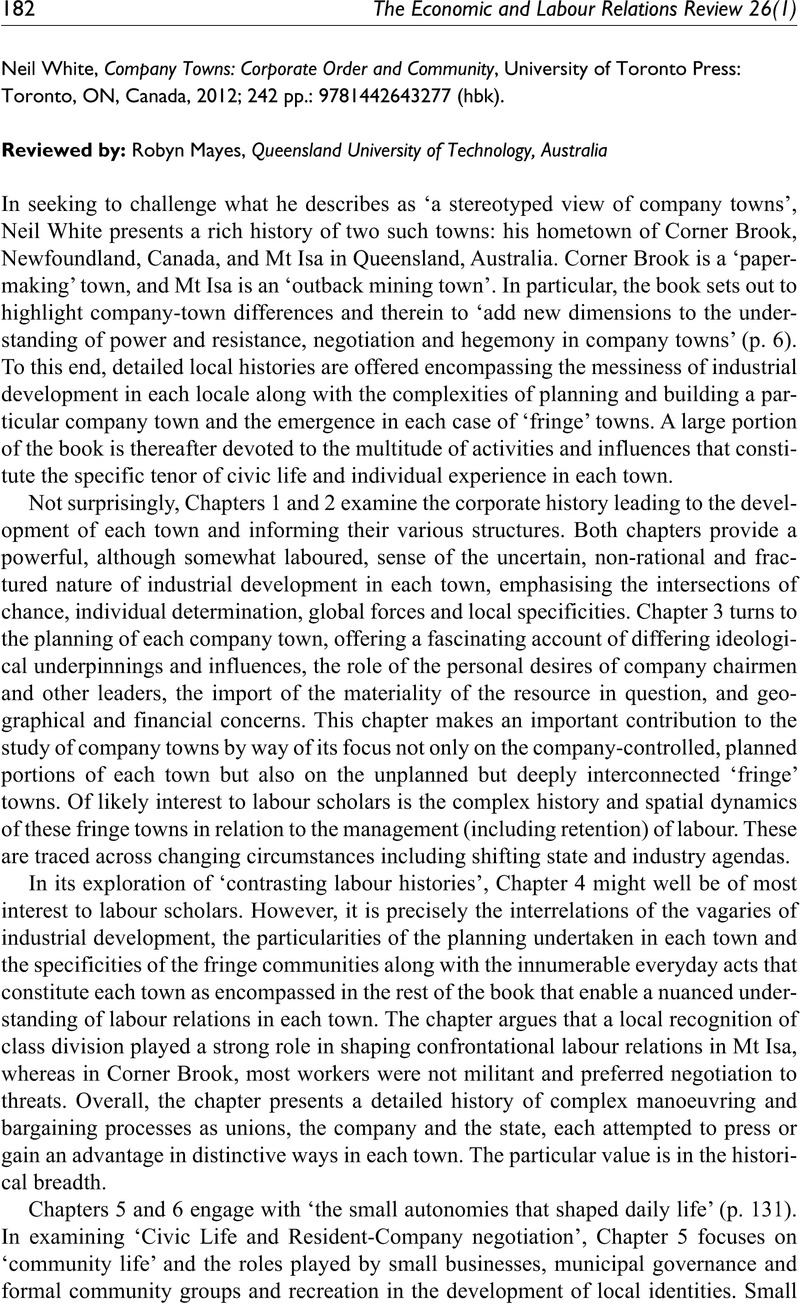No CrossRef data available.
Article contents
Neil White, Company Towns: Corporate Order and Community, University of Toronto Press: Toronto, ON, Canada, 2012; 242 pp.: 9781442643277 (hbk).
Review products
Neil White, Company Towns: Corporate Order and Community, University of Toronto Press: Toronto, ON, Canada, 2012; 242 pp.: 9781442643277 (hbk).
Published online by Cambridge University Press: 01 January 2023
Abstract
An abstract is not available for this content so a preview has been provided. Please use the Get access link above for information on how to access this content.

- Type
- Book reviews
- Information
- Copyright
- Copyright © The Author(s) 2015
References
Summers, A (2002 [1975]) Damned Whores and God’s Police: The Colonisation of Women in Australia. Melbourne, VIC, Australia: Penguin.Google Scholar


